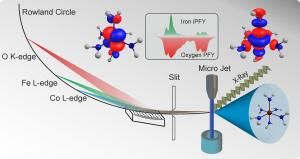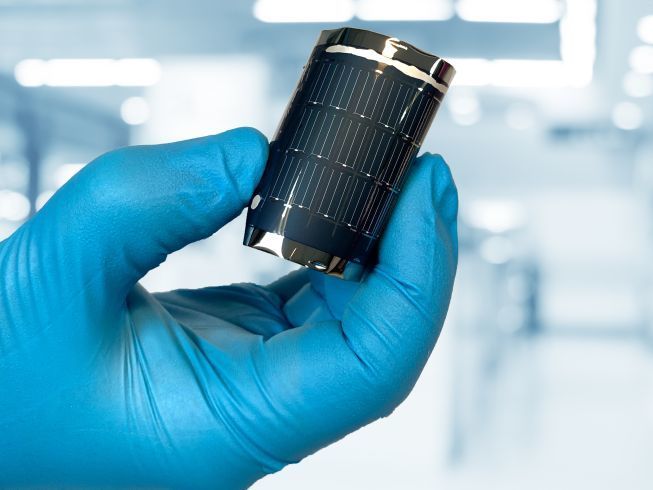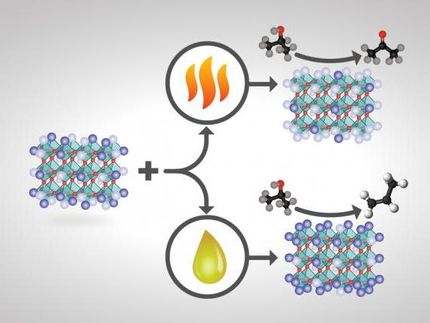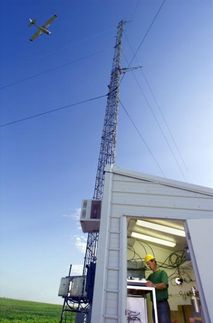'Problem wells' source of greenhouse gas
High levels of the greenhouse gas methane were found above shale gas wells at a production point not thought to be an important emissions source, according to a study jointly led by Purdue and Cornell universities. The findings could have implications for the evaluation of the environmental impacts from natural gas production.
The study, which is one of only a few to use a so-called "top down" approach that measures methane gas levels in the air above wells, identified seven individual well pads with high emission levels and established their stage in the shale-gas development process.
The high-emitting wells made up less than 1 percent of the total number of wells in the area and were all found to be in the drilling stage, a preproduction stage not previously associated with significant emissions.
"These findings present a possible weakness in the current methods to inventory methane emissions and the top-down approach clearly represents an important complementary method that could be added to better define the impacts of shale gas development," said Paul Shepson, a professor of chemistry and earth atmospheric and planetary sciences at Purdue who co-led the study with Jed Sparks, a professor of ecology and evolutionary biology at Cornell. "This small fraction of the total number of wells was contributing a much larger large portion of the total emissions in the area, and the emissions for this stage were not represented in the current inventories."
The researchers flew above the Marcellus shale formation in southwestern Pennsylvania in the Purdue Airborne Laboratory for Atmospheric Research, a specially equipped airplane. The aircraft-based approach allowed researchers to identify plumes of methane gas from single well pads, groups of well pads and larger regional scales and to examine the production state of the wells.
"It is particularly noteworthy that large emissions were measured for wells in the drilling phase, in some cases 100 to 1,000 times greater than the inventory estimates," Shepson said. "This indicates that there are processes occurring - e.g. emissions from coal seams during the drilling process - that are not captured in the inventory development process. This is another example pointing to the idea that a large fraction of the total emissions is coming from a small fraction of shale gas production components that are in an anomalous condition."
The bottom-up inventories have been produced from industry measurements of emissions from individual production, transmission and distribution components and then scaling up to create an estimate of emissions for the region. However, with thousands of wells, and a complex processing and transmission system associated with each shale basin, obtaining a representative data set is difficult, he said.
A paper detailing the results will be published in the Proceedings of the National Academy of Sciences. The David R. Atkinson Center for a Sustainable Future at Cornell University funded this research.
"We need to develop a way to objectively measure emissions from shale gas development that includes the full range of operator types, equipment states and engineering approaches," Shepson said. "A whole-systems approach to measurement is needed to understand exactly what is occurring."
Most read news
Other news from the department science

Get the chemical industry in your inbox
By submitting this form you agree that LUMITOS AG will send you the newsletter(s) selected above by email. Your data will not be passed on to third parties. Your data will be stored and processed in accordance with our data protection regulations. LUMITOS may contact you by email for the purpose of advertising or market and opinion surveys. You can revoke your consent at any time without giving reasons to LUMITOS AG, Ernst-Augustin-Str. 2, 12489 Berlin, Germany or by e-mail at revoke@lumitos.com with effect for the future. In addition, each email contains a link to unsubscribe from the corresponding newsletter.
Most read news
More news from our other portals
Last viewed contents
BASF increases prices for certain polyalcohols in Europe
1,3-Dipolar_cycloaddition

Peptide induces chirality evolution in a single gold nanoparticle
Off-label_use
Category:Indole_forming_reactions

Better insight into molecular interactions
BASF opens a second polyurethane systems site in Russia
Agilent Technologies introduces method for chemical fingerprinting of microscopic materials from crime scenes
ITT agrees to purchase Nova Analytics
New information from REACH registrations extends the SIN List

21.4% record efficiency for flexible solar cells - Flexible solar cells gain power



























































